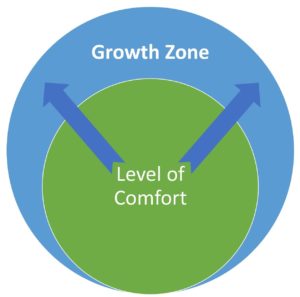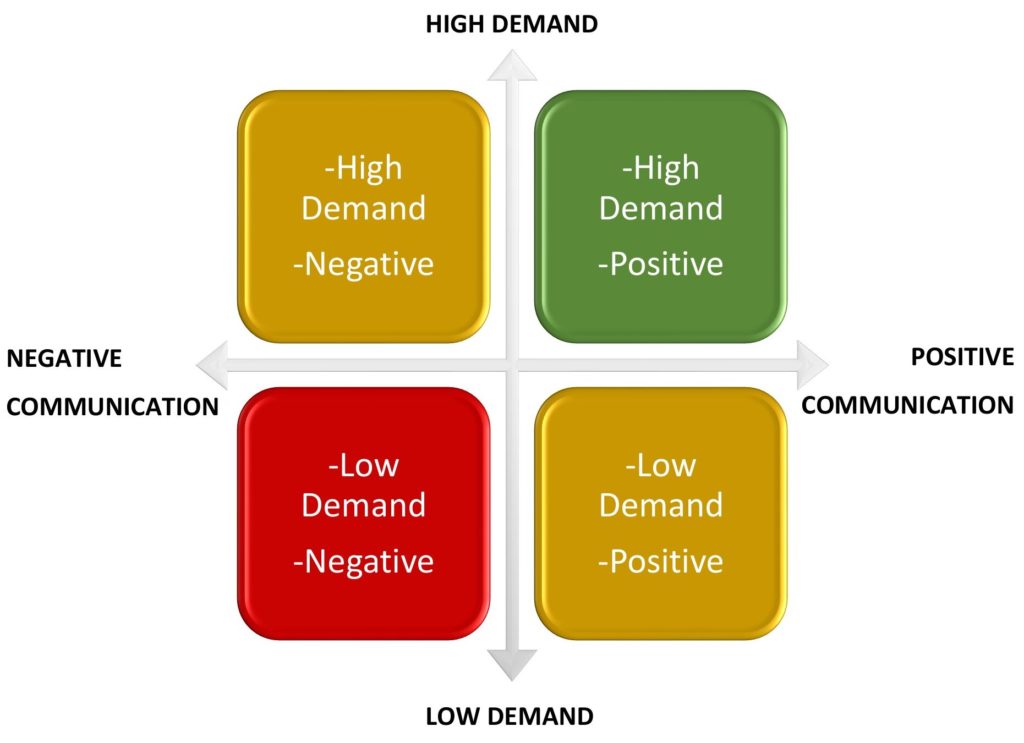
The vast majority of the time, coaches have good intentions when delivering feedback. They want players to perform better. The challenge is, human beings are complicated, and well-intentioned feedback can fail if not delivered effectively. It can even have the opposite effect of making the performance worse!
The way a coach’s feedback is delivered is every bit as important, if not more, than the content of the feedback itself.
In an Integrated Approach, we understand that players are entire human beings who bring their physical capacities, tactics, and techniques onto the court along with their emotions and mental states. (click here for more information on the Integrated Approach).
Coaches would do well to be mindful of the emotional impact their feedback has on players. Every piece of feedback delivered will create an ‘emotional climate’ in a player that will either enhance or detract from their ability to perform.
There are two essential and interrelated elements when discussing positive versus negative feedback, ‘demand’ and positive vs negative communication:
- Demand:
This refers to the ‘accountability for excellence’ the coach imparts to the player. Effective coaches create an atmosphere of high demand. I have found this is different than imposing ‘expectations’ onto players (which typically leads to frustration for coaches, players, parents, etc.). On the other hand, healthy demand is informed by the coach/player relationship, the player’s effort & focus, and the measurable goals set.

Players commonly have preconceived beliefs about their limitations (especially developing juniors). Most of us are averse to pushing past our level of comfort. The trick is to identify the players’ perceived limits and then empower them to push beyond. Our most significant level increases are when we let ourselves into this ‘growth zone.’ It turns out, the comfort we all fight to maintain is the enemy of growth.
Life begins at the end of your comfort zone
Neale Donald Walsh – Author/Speaker
- Positive vs Negative Communication:
It is a common belief that coaching is merely telling people what they do wrong. This couldn’t be further from the truth. Error detection and correction is only a small part of the feedback process. (click here for article on feedback types) If a coach has this as their primary feedback, they are short-changing their students! Coaching is an interactive communication process that requires building trust and rapport with the student. I am not sure if you have noticed, but telling people what they are doing wrong does not usually win any relational points with people, even if the advice is technically correct. How something is said is every bit as important as what is said. This is true in any relationship, whether a friend, spouse or tennis student.
Many coaches, however, have a misunderstanding of what positive feedback is. Positive feedback is not calling poor performance good or just smiling and ignoring errors, etc. It is purposeful communication designed to create the most empowering emotional climate for change possible.
Positive feedback builds up better long-term psychology. Negative feedback often builds a ‘fear of failure’ mentality leading to players choking in matchplay. How well do people hit shots when the words ‘Please don’t miss!’ or ‘Don’t double fault’ are running through their minds? How often is negative coaching feedback the source of the negative self-talk?
Positive feedback is purposeful communication designed to create the most empowering emotional climate for change possible.
Wayne Elderton – Coaching Educator
Conversely, positive feedback builds a ‘go for the goal’ mentality. Imagine hitting a second serve at match point in a third set tie-breaker and thinking, ‘Spin-it hard!’ Going for a goal creates more confident play. Therefore, to create these effective performance goals, coaches must become ‘success seekers’ rather than ‘fault finders.’
Positive feedback is a communication tool to change specific behaviours. It is reflecting the performance back to the player. No matter what the performance (good or bad), a coach can remember the keywords “Praise” and “Encourage.”
Praising is what a coach should do when a player performs correctly. Coaches should constantly try to catch their players doing things right! By reinforcing good performance, the player has a goal to repeat over and over and start to develop confidence.
Effective training however will also include overcoming challenges and the inevitable accompanying failure. We encourage players to have a ‘Fail-forward’ mentality. Positive feedback is a critical tool to unlock the power of believing you can improve (even in failure). This is called a ‘Growth Mindset’ and is based on the exceptional work done by Stanford Psychology Professor Carol Dweck. (click here for helpful video on Growth Mindset from Trevor Ragan at Train Ugly).
When a player performs incorectly the coach’s feedback switches from ‘praising’ to ‘encouraging’. Telling them ‘don’t do this or that’ is of no use if they don’t understand the correct thing to do. Always link the correction to the result that can be expected.
For example, “Chris, your preparation was fine. If you change your racquet angle a bit to keep the ball in the court, you will have it”. Here the coach praises any good performance and encourages any poor performance. In this way, good performance gets highlighted, making it easier to remember and repeat. Poor performances are corrected without the emotional impact of negative feedback. More importantly, players learn how to be problem solvers, rather than learning the coach thinks they are awful and having heads filled with what not to do.
Coaches must become ‘Success-seekers’ rather than ‘Fault-finders’.
The diagram shows four quadrants plotted along the two axes of the degree of demand & positive vs negative communication:

- Low Demand/Negative Communication: This is the least effective a coach’s feedback can be. It is often associated with emotionally damaging players and promoting drop-out, etc. The coach’s feedback reveals they don’t care about the person but are trying to force better performance (typically for self-centred reasons). Feedback like this is an immediate ‘fail’ at every level of Canadian coaching certification.
- Low Demand/Positive Communication: This type of feedback is not targeted and can be described as merely ‘flattery.’ It often sounds like the stereotypical coaching ‘babble’ (‘Good.’ ‘Great shot.’ ‘Well done,’ etc.) It has a little motivational value, but, like a nutritional ‘sugar-high,’ it has diminishing returns and often leads to slight performance improvement, but only at first. Telling little Taylor “Great shot” when they sent a ball into the side fence does no one any good. This kind of feedback will often even have a negative effect as Taylor starts to expect emotional rewards no matter how poor their performance. Recreational coaches regularly fall into this mode, which is why they are often ineffective when trying to drive the improvement required for performance groups.
- High Demand/Negative: This is often seen as the typical ‘performance coach’ with the reputation of being ‘tough.’ Although this type of feedback can produce results, and some players respond to it, the possible harmful consequences often outweigh any performance results. Just listen to the multiple stories of players who have attained good results (typically in Juniors) but dropped out of tennis. More often than not, you will hear they were exposed to a steady diet of this kind of feedback. I recently saw a collection of interviews with players who have dropped out of tennis where 75% of the participants reported what can be described as ‘emotional abuse.’
- High Demand/Positive: This is what all coaches need to evolve to for maximum effectiveness and player inspiration. It is a very challenging balance to achieve and, in my experience, is only possible through coaching training.
The youtube link below shows an example from a Football movie of the far end of this scale. I am not advocating every tennis coach communicate like this (especially with U12 players). It is interesting to see the extreme high demand and positive elements (listen for any negative feedback) woven together. Does the coach believe in the player more than they believe in themselves? What is the result of this coach-player interaction in terms of the player’s confidence and self-efficacy?
Clip from the football movie ‘Facing the Giants’
CONCLUSION
Armed with the understanding of healthy demand coupled with positive feedback, coaches can create powerful learning climates within players to maximize their learning, growth and performance.
Brilliant work as per usual Wayne thanks for sharing